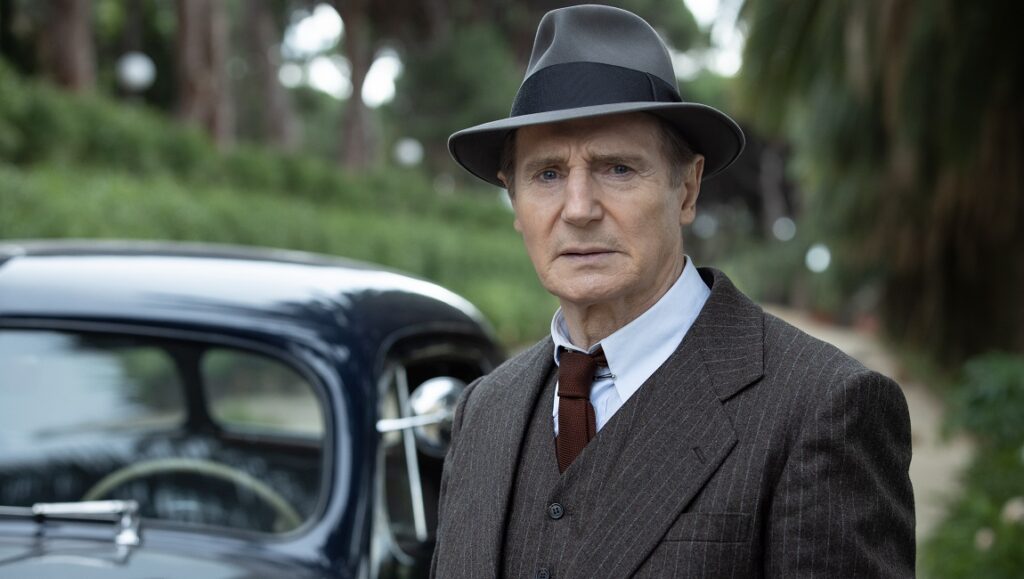For a director like Neil Jordan, whose long, seemingly middle-of-the-road filmography actually houses digressions from respectable adaptation into unrespectable pulp and soap, a Raymond Chandler homage would be expected, even more so a riff on a preexisting riff. Marlowe, named after the perennial detective, is itself based on John Banville’s The Black-Eyed Blonde, as much an homage to Chandler and Marlowe as it is a continuation, written under the pseudonym of Benjamin Black. Perhaps Jordan was able to recognize how the impossible-to-replicate idiosyncrasies of Chandler sank otherwise capable filmmakers — like Robert Montgomery, whose 1947 Lady in the Lake gets strangled by the author’s own cut-up obfuscation — and decided to put another degree of separation between himself and his source character for some guaranteed safety.
Banville’s straight-ahead novel reads more as a personal test laid out by the author, to mimic Chandler’s prose sans alcoholism, depression, erratic focus, etc. The Black-Eyed Blonde — and thus, Marlowe — is built atop noir tropes: Mrs. Clare Cavendish (Diane Kruger) shows up at Marlowe’s (Liam Neeson) office, inexplicably asking for him to find an ex-lover, film extra Nico Peterson, who’s assumed dead, killed by a mobbed-up club owner (Danny Houston), but may be… alive? The “standards” of the plot already call attention to the deficiencies of Banville, and in turn, Jordan, who’s less making a palimpsest than he is a spiraling series of copycat gestures. Marlowe is most fascinating in its margins, bridging Dublin and Barcelona with faux-Angelino yellow filters, imparting the idea of perpetually unsteady ground, where “nothing is as it seems,” but quite literally.
Is this intentional dissonance or laziness? Probably the latter, but Jordan is still too savvy not to realize the opportunity to render a more inscrutable sense of place as applied to Chandler’s prose, and has now taken to citing the original Blade Runner’s own Los Angeles as an inspiration. The jaundiced palette, the influx of disorienting neon in nighttime driving scenes (easily Marlowe’s most immediately pleasurable sequences), do little to restore the air that Neeson sucks out of the film every time his 100th screen role lumbers into view. He’s no Humphrey Bogart, nor is he Elliot Gould; he conveys little beyond his own Neesonness, a pillar of cinematic conventionality, effectively undercutting the modestly experimental spirit of Jordan.
Published as part of InRO Weekly — Volume 1, Issue 7.


Comments are closed.